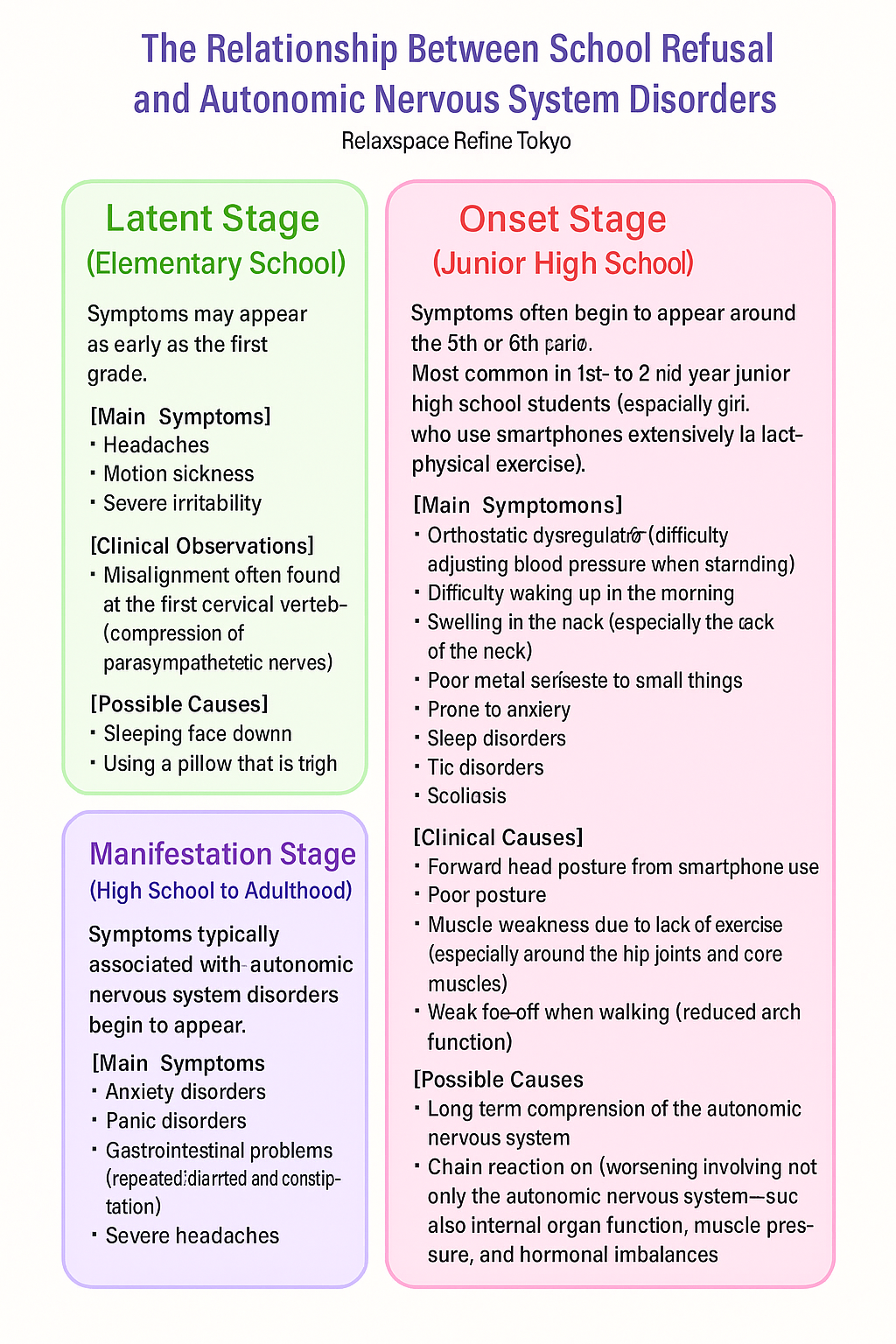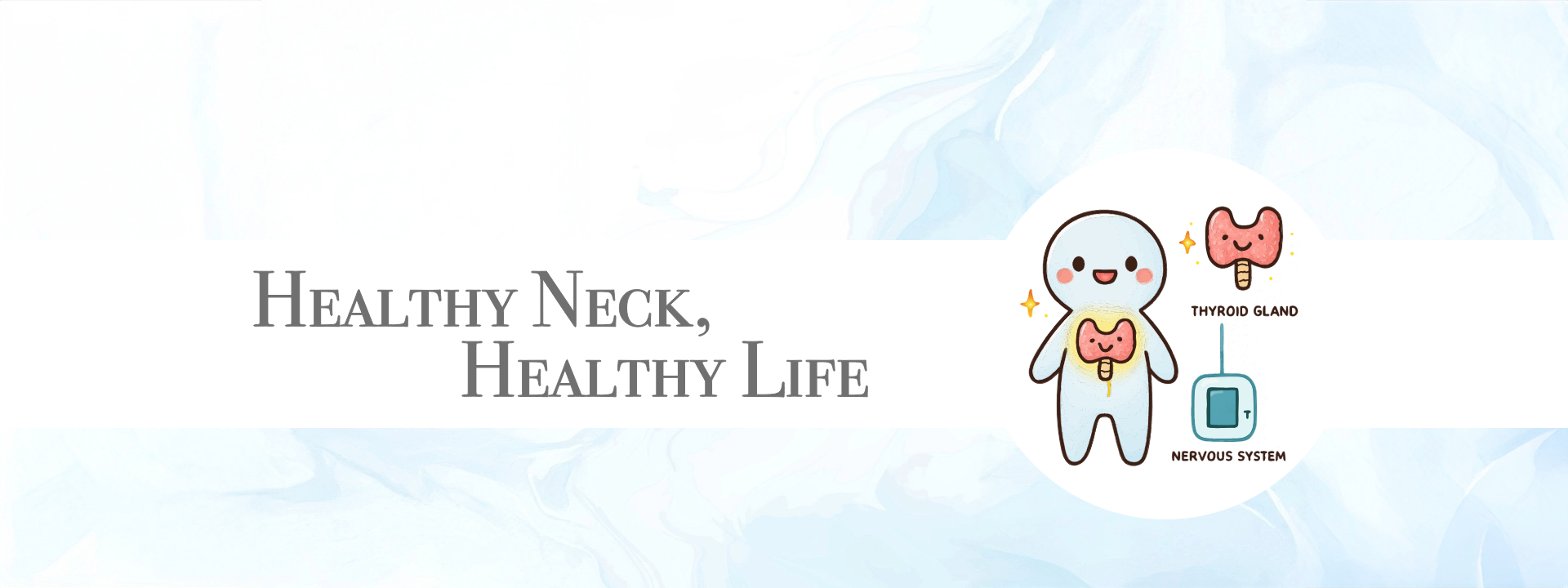Autonomic Nervous System Symptoms Are Interconnected
Neck misalignment may determine your future.
At Relaxspace Refine, we deeply listen to each patient’s “past.” From the first signs of minor discomfort to the progression of symptoms up to the present, we carefully accumulate clinical data. Through this process, a common thread has emerged.
That is the fact that in many cases, “neck misalignment” causes autonomic nervous system disruption, eventually leading to various diagnoses.
Headaches, orthostatic dysregulation, anxiety disorders, tic symptoms — at first glance, these conditions seem unrelated. However, they may all stem from autonomic nervous system disruption.
And the root cause may be “neck misalignment.” Even if the diagnoses differ, the essential issue could be the same.
Even slight misalignment of the neck can compress the autonomic nerves, eventually placing significant strain on both the mind and body. Early care is crucial in protecting the future of children.
Latency Phase Seen in Elementary School Students
Symptoms related to the autonomic nervous system can sometimes appear as early as in lower elementary school grades.
Main symptoms:
- Headaches
- Motion sickness
- Strong irritability
Clinical observations:
Displacement of the atlas (the top cervical vertebra) is often observed, leading to compression of the parasympathetic nerves.
Possible causes:
- Sleeping face down
- Use of pillows with inappropriate height

Onset Phase Common in Middle School Students
Symptoms often become noticeable around fifth or sixth grade and peak during middle school. Prolonged smartphone use and lack of physical activity are believed to contribute significantly.
Main symptoms:
- Orthostatic dysregulation (difficulty adjusting blood pressure when standing)
- Difficulty waking up in the morning
- Swelling around the neck (especially near the occipital region)
- Heightened sensitivity to minor stimuli
- Strong anxiety
- Sleep disorders
- Tic symptoms
- Scoliosis
Clinical causes:
- Forward head posture due to smartphone usage
- Muscle weakness around the core and hip joints due to lack of exercise
- Weak foot arch function during walking
Possible background factors:
Prolonged stress on the autonomic nervous system and cascading effects on organ function, muscle tone, and hormonal balance.
Manifestation Phase from High School to Adulthood
From high school onward, autonomic nervous system disruption is more likely to present as serious disorders.
Main symptoms:
- Anxiety disorders
- Panic disorders
- Gastrointestinal issues (alternating diarrhea and constipation)
- Severe headaches
Conclusion
Rather than getting caught up in various symptoms and diagnoses, it is vital to focus on the “root cause.” That is the true path to prevention and hope for the future.




コメント